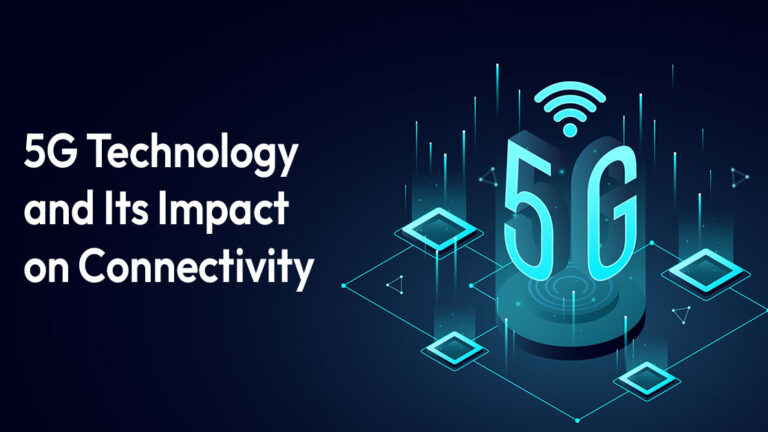The advent of 5G technology has sparked a technological revolution poised to reshape the way we live, work, and communicate. With its promise of faster speeds, lower latency, and unparalleled connectivity, 5G has the potential to revolutionize not only the telecommunications industry but also a wide array of other sectors. In this comprehensive exploration, we delve into the intricacies of 5G technology, its core features, its potential impact on industries, and the transformative effects it will have on our daily lives. This essay is structured to provide a deep understanding of 5G technology and its multifaceted influence on our world.
The world is on the verge of a technological revolution. The fifth generation of wireless technology, aptly named 5G, has emerged as a powerful force poised to transform our lives. With its promise of faster speeds, lower latency, and unprecedented connectivity, 5G is not just an evolution of our current networks; it’s a revolution. In this comprehensive exploration, we will delve into the intricacies of 5G technology, its core features, its potential impact on industries, and the transformative effects it will have on our daily lives.
Before we embark on a journey to understand the impact of 5G technology, it is essential to grasp the fundamentals of this groundbreaking innovation.
Key Features of 5G Technology
Speed: 5G offers significantly faster data transfer rates compared to its predecessors. While 4G/LTE can achieve peak speeds of up to 1 Gbps, 5G can reach up to 20 Gbps. This exponential increase in speed opens up a world of possibilities, from lightning-fast downloads to lag-free streaming and real-time communication.
Latency: The time elapsed between delivering a command and receiving a response is referred to as latency.5G aims to reduce latency to as low as 1 millisecond or less. This near-instantaneous response time is crucial for applications like autonomous vehicles, remote surgery, and augmented reality.
Capacity: 5G significantly expands network capacity, allowing more devices to connect simultaneously. This is essential in an era where the Internet of Things (IoT) is rapidly expanding, and billions of devices require seamless connectivity.
Impact of 5G on Connectivity
The impact of 5G on connectivity extends far beyond merely faster download speeds or the ability to stream high-definition videos without buffering. It encompasses a wide array of transformative changes across various industries and everyday life.
- Faster Download and Upload Speeds
One of the most immediate and noticeable impacts of 5G technology is the dramatic increase in download and upload speeds. This means that downloading large files, streaming high-definition content, and uploading data will become nearly instantaneous, enhancing the user experience across various applications and services. - Improved Streaming and Gaming
For video streaming platforms and online gamers, 5G technology is a game-changer. It enables uninterrupted 4K and even 8K video streaming, while also reducing latency in online gaming, ensuring a smoother and more responsive gaming experience. - Internet of Things (IoT) Expansion
The Internet of Things (IoT) is set to grow exponentially with the widespread adoption of 5G. This technology’s capacity to connect a vast number of devices simultaneously will facilitate smart cities, smart homes, and industrial IoT applications, revolutionizing how we interact with our environments. - Telemedicine and Remote Surgery
The ultra-low latency of 5G enables real-time communication between medical professionals and patients, even in remote locations. This opens doors to telemedicine and remote surgery, where surgeons can operate on patients in different parts of the world with precision and immediacy. - Autonomous Vehicles
5G is instrumental in the development and success of autonomous vehicles. These vehicles require a constant and seamless connection to the internet to operate safely. With low latency and high reliability, 5G networks are the backbone of future transportation systems. - Enhanced Augmented and Virtual Reality
Augmented Reality (AR) and Virtual Reality (VR) applications depend on low latency and high-speed connections to provide immersive experiences. 5G makes AR and VR more accessible and compelling, revolutionizing industries like gaming, education, and training. - Industrial Revolution
In the industrial sector, 5G paves the way for smart factories and Industry 4.0. With its capacity to support a massive number of sensors and devices, 5G enables real-time monitoring and control of manufacturing processes, optimizing efficiency and reducing downtime. - Environmental Monitoring
5G plays a crucial role in environmental monitoring and conservation efforts. It enables real-time data collection from sensors placed in forests, oceans, and remote areas, aiding in climate change research and disaster prevention. - Rural Connectivity
5G has the potential to bridge the digital divide by extending high-speed internet access to rural and underserved areas. Its ability to provide connectivity over longer distances is particularly advantageous in remote regions. - Economic Growth
The deployment of 5G technology is expected to drive economic growth and innovation across various sectors. It can create new markets and job opportunities, making it a key driver of future economic development.
While the prospects of 5G technology are promising, its widespread adoption also poses challenges and considerations:
Infrastructure: The rollout of 5G requires a substantial investment in infrastructure, including the installation of thousands of small cells and the upgrading of existing network towers.
Security: With more devices connected to the internet, there are increased security risks. Protecting data and networks from cyber threats becomes paramount in a 5G world.
Privacy: The vast amount of data generated by 5G-connected devices raises concerns about privacy. Striking a balance between data utilization and safeguarding individual privacy is essential.
Regulation: Governments and regulatory bodies must establish clear guidelines and regulations to ensure the responsible and ethical deployment of 5G technology.
Health Concerns: Some individuals express concerns about potential health risks associated with prolonged exposure to higher-frequency radio waves used in 5G networks. Research on this topic continues. - 5G technology represents a significant leap forward in the world of connectivity. Its unparalleled speed, low latency, and capacity to connect a multitude of devices have the potential to reshape industries, transform daily life, and drive innovation. However, realizing the full potential of 5G requires careful planning, investment, and consideration of various challenges, including security, privacy, and infrastructure. As 5G networks continue to roll out globally, we find ourselves on the brink of a new era in connectivity, one that promises to redefine how we live, work, and interact with the world around.





